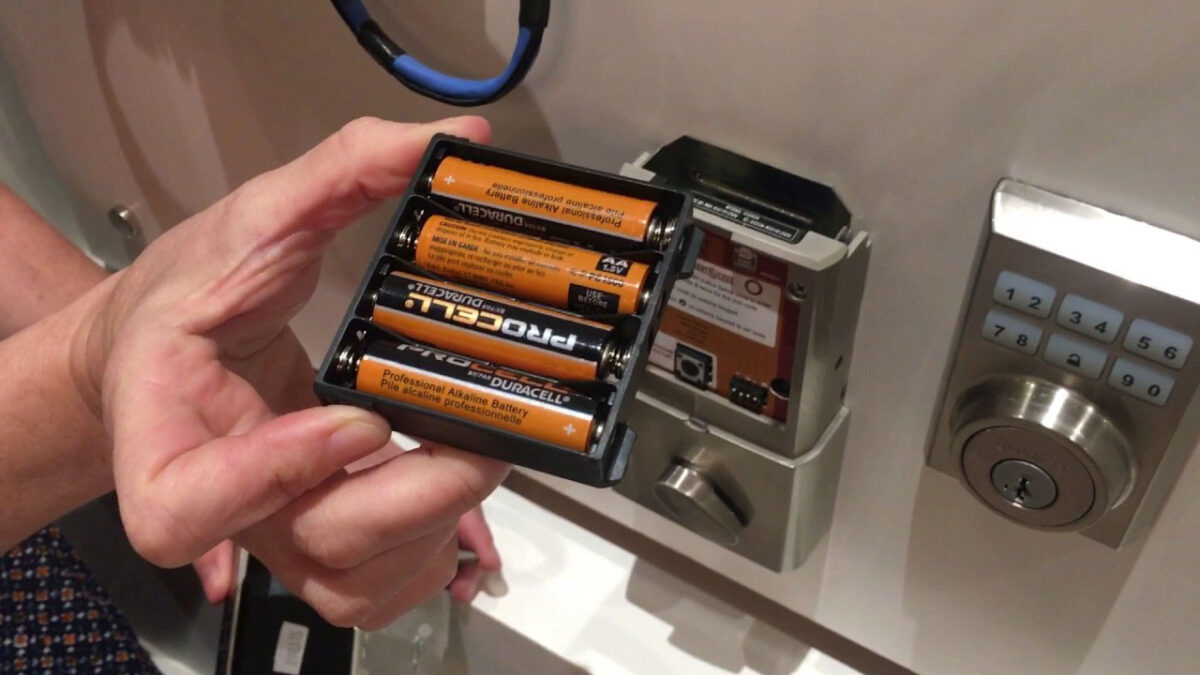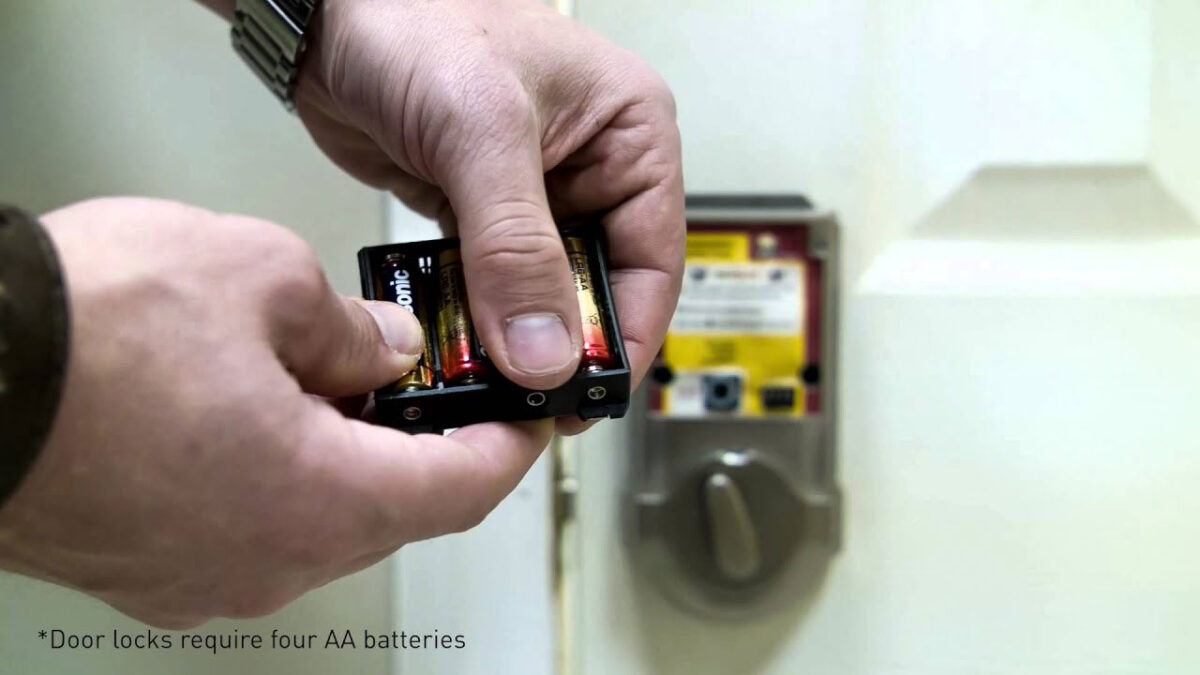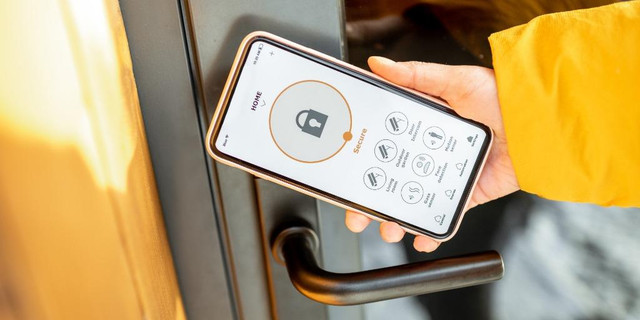Smart door locks are typically powered by batteries or a direct connection to the home’s electrical system. Some models may also feature alternative charging methods, such as solar panels.
In today’s fast-paced world, the convenience and security of smart home technology have become a priority for many homeowners. Smart door locks stand out as a prime example of innovation in home security, offering both convenience and peace of mind.
These locks eliminate the need for traditional keys, enabling access through various methods like codes, smartphones, or even fingerprints. Their power sources are designed to ensure reliability and longevity, ensuring that homes remain secure without constant maintenance. The adaptability of smart door locks to different power sources underscores their flexibility and the technology’s commitment to user convenience. As we delve deeper into the era of smart homes, understanding the functionality and power management of these devices becomes essential for anyone looking to enhance their home security.
Introduction To Smart Door Locks
Smart door locks revolutionize home entry methods. These locks offer security and convenience with their innovative features. They work by linking to home automation systems. They allow users to unlock doors without traditional keys.
The Rise Of Home Automation
Home automation is becoming commonplace. It brings comfort and control to homeowners. Devices like smart locks are part of this trend. They connect to the internet. This enables remote access and monitoring.
The Convenience Of Keyless Entry
Keyless entry is a major benefit of smart locks. Users open doors using smartphones, codes, or biometrics. This means no more lost keys. It also means easy access for friends and family.
Types Of Smart Door Locks
Exploring the world of smart door locks reveals a variety of types. Each draws power uniquely, catering to different needs. Let’s delve into the most common smart lock systems available today.
Keypad Entry Systems
Keypad entry systems feature numbered pads. Users enter a code to unlock doors. These systems often use batteries. Some models also support low-power connections to home circuits.
- Battery life varies by usage and lock model.
- Batteries need replacement every 6-12 months.
- Many models issue alerts when power is low.
Biometric Locks
Biometric locks use fingerprints to grant access. They provide high security. Power sources for biometric locks include batteries and direct current.
- Fingerprint recognition requires consistent power.
- Locks store power to ensure access during outages.
- Some models connect to mobile apps for power monitoring.
Remote Access Locks
Remote access locks allow control from anywhere. They connect to Wi-Fi or Bluetooth. Users unlock doors using smartphones or other devices.
- These locks often use rechargeable or AA batteries.
- Some can integrate with smart home systems for power.
- Remote access can drain batteries faster than other types.
Powering Smart Locks: An Overview
Powering Smart Locks: An Overview explores how these innovative devices stay operational. Understanding the power source is key to maximizing their benefits.
Battery Operation Basics
Most smart locks run on batteries. This makes installation easy. No need for complex wiring.
- AA batteries are common. They last for months.
- Some models use rechargeable batteries. These are eco-friendly.
- Battery levels are monitored via an app. This ensures you’re never locked out.
Replacing batteries is simple. Just open the lock cover and swap them out.
Electrical Grid Connection
A few smart locks connect to the home’s electrical system. This offers constant power.
| Pros | Cons |
|---|---|
| No battery changes needed | Installation can be complex |
| Uninterrupted power supply | May not work during power outages |
Backup batteries are often included. They keep the lock working if the power goes out.
Battery-powered Locks
Battery-Powered Locks are a key component of smart home security. These locks use batteries as their main source of power. This makes installation easy. They do not need wires or complex setups.
Common Battery Types
Smart door locks usually use standard batteries. You can find these in most stores. Common types include:
- AA – Often used, reliable, and easy to replace.
- AAA – Smaller than AA and used in compact locks.
- 9V – Provides more power and is used in higher-end models.
- CR123A – Known for a longer lifespan in high-drain devices.
Battery Life Expectancy
The life expectancy of lock batteries can vary. It depends on the lock model and usage. Most smart locks offer:
- Battery life ranging from 3 months to a year.
- Higher-end models may last up to 3 years.
Using features like Wi-Fi or Bluetooth can shorten battery life.
Indicators For Battery Replacement
Smart locks have built-in features to tell you when to change batteries. Look out for these signs:
- LED Lights: Flashing lights indicate low battery.
- App Notifications: Your phone app will send alerts.
- Beeping Sounds: Some locks beep when batteries are low.
Always have spare batteries at home. This ensures your lock never runs out of power.
Wired Smart Locks
Smart homes often feature Wired Smart Locks. These locks connect directly to home power systems. They offer reliable security. Homeowners appreciate their consistent performance.
Direct Wiring Setup
Most smart door locks need power to function. Wired smart locks draw electricity through direct wiring. Professional installation is best. Electricians ensure safe and proper setup.
- Connects to home’s electrical circuit
- Installation by certified electrician recommended
- No batteries needed
Power Backup Solutions
Power outages pose risks. Smart locks must remain operational. Backup power solutions prevent lockouts. They keep locks working during outages.
| Backup Solution | Description |
|---|---|
| Battery Backup | Kicks in if main power fails |
| UPS (Uninterruptible Power Supply) | Provides power for short periods |
| Generator | Supports entire home’s power needs |

Credit: www.ilockey.com
Alternative Power Sources
Smart door locks need power to keep your home safe. Alternative power sources are crucial. They ensure locks work, even during power outages.
Solar-powered Options
Solar panels can power smart locks. They turn sunlight into electricity. This means your lock always has power, even when the main supply is out. Solar options are eco-friendly and cost-effective in the long run.
- Pros: Renewable, reduces electricity bills.
- Cons: Initial setup might be costly.
Kinetic Energy And Smart Locks
Kinetic energy from actions, like turning a handle, can power locks. Every time you use the door, you’re charging the lock. It’s a smart way to save energy.
| Energy Source | Pros | Cons |
|---|---|---|
| Solar Power | Renewable, saves money | Costly setup |
| Kinetic Energy | Uses natural motion, endless supply | May need regular use |
These alternative power sources keep your locks working. They make sure you’re never locked out. Choose the best option for your home.
Maintaining Power For Your Smart Lock
Smart door locks offer convenience and security for homes and offices. They need power to function effectively. Understand how to maintain and troubleshoot their power sources to ensure reliability.
Regular Maintenance Tips
Keeping smart locks powered is critical for uninterrupted use. Follow these maintenance tips:
- Check batteries regularly. Replace them before they run out.
- Use high-quality batteries for longer life.
- Clean battery contacts to ensure a good connection.
- Consider a backup power source like a power bank.
Troubleshooting Power Issues
Encounter a power issue? Try these steps:
- Verify that the batteries are installed correctly.
- Check for visible damage on the lock.
- Reset the lock by removing and reinserting the batteries.
- If problems persist, contact support for your lock’s brand.

Credit: www.ilockey.com
Future Of Smart Lock Power
Smart door locks have revolutionized home security. They offer convenience and peace of mind. But they need power to work. Let’s explore the future of powering these devices.
Advancements In Battery Technology
Better batteries are coming. They will last longer and charge faster.
- Long-life batteries reduce replacement needs.
- Quick charging gets locks ready sooner.
- More power cycles mean batteries work longer.
Innovations In Energy Harvesting
Locks can gain power from their surroundings. This is energy harvesting.
| Source | How It Works |
|---|---|
| Solar | Converts sunlight into electricity. |
| Kinetic | Uses motion from door use. |
| Thermal | Turns temperature changes into power. |
Smart locks will soon get power in new ways. Say goodbye to frequent battery changes!

Credit: zerodaygear.com
Frequently Asked Questions
What Powers Smart Door Locks?
Smart door locks typically use batteries as their primary power source, ensuring operation even during a power outage.
How Long Do Batteries Last In Smart Locks?
Batteries in smart locks can last anywhere from 3 months to a year, depending on usage and lock model.
Can Smart Locks Be Wired To Homes?
Yes, some smart locks can be hardwired to a home’s electrical system, but most rely on batteries.
Do Smart Door Locks Require Maintenance?
Smart door locks require minimal maintenance, mainly battery replacement and occasional software updates.
Are Smart Locks Energy Efficient?
Smart locks are designed to be energy efficient, with power-saving modes to extend battery life.
Conclusion
Understanding the power mechanisms behind smart door locks is crucial for any modern homeowner. These innovative devices ensure security and convenience, drawing energy from batteries or your home’s electrical system. As technology advances, the efficiency and reliability of smart lock power sources continue to improve, offering peace of mind and seamless access control.
Embrace the future of home security with confidence in your smart door lock’s power.




